Capital Spring Revelry: An Illustrated Album of Qing Dynasty Festivities
Overview
This 12-panel Qing Dynasty album, Capital Spring Revelry (Jīng Niǎn Chūn Xī Tú Cè), painted by Huang Yue (黄钺, 1750–1841) during the Jiaqing reign (1796–1820), celebrates the vibrant Lunar New Year traditions of early 19th-century Beijing. Housed in the National Palace Museum, Taipei, the album combines meticulous ink-and-color illustrations with poetic inscriptions by Emperor Jiaqing’s sons, Mianning (later Emperor Daoguang) and Miankai. Each panel blends folk customs, imperial symbolism, and Daoist-Confucian ideals to project an image of Qing prosperity.
Translations and Cultural Context
Cover Inscription
“Capital Spring Revelry” (京辇春熙)
- Literal Meaning: “Capital” (Jīng Niǎn) refers to Beijing as the political and cultural heart of the Qing Empire, while “Spring Revelry” (Chūn Xī) evokes the festive exuberance of Lunar New Year celebrations.
Panel-by-Panel Translations
- Chūn Fān Jiǎn Cǎi (春幡剪彩, “Spring Banners and Paper-Cutting”)
- Depiction: Artisans craft colorful silk banners and paper cuttings adorned with auspicious symbols like butterflies (nào é, 闹蛾).
- Emperor’s Poem:
“Banners flutter, heralding the new year’s dawn;
Ancient motifs bless a thriving land—
The people’s joy mirrors Heaven’s grace.” - Cultural Note: Paper cuttings symbolized wishes for fortune and longevity, often displayed on doors during Spring Festival.
- Xiāo Sì Shāng Dēng (萧寺商灯, “Lantern Market at the Ancient Temple”)
- Depiction: A bustling night market surrounds a temple illuminated by lanterns, with riddles (shāng dēng, 商灯) hung for visitors to solve.
- Emperor’s Poem:
“Temple lights pierce the darkness;
Riddles tease minds, laughter fills the air—
A dance of shadows and wit.” - Historical Context: Temple fairs during Lunar New Year integrated commerce, spirituality, and entertainment.
- Jí Bào Zhàn Fēng (吉爆占丰, “Firecrackers for Harvest Blessings”)
- Depiction: Villagers light firecrackers at Dongyue Temple to pray for agricultural abundance.
- Emperor’s Poem:
“Cracks echo, evil spirits flee;
Smoke curls upward, blessings descend—
A symphony of hope for golden fields.” - Symbolism: Firecrackers (biān pào, 鞭炮) were believed to ward off misfortune and invite divine favor.
- Tiān Dēng Zhào Ruì (天灯照瑞, “Sky Lanterns Illuminate Auspiciousness”)
- Depiction: Families release sky lanterns (tiān dēng, 天灯) from pine-decorated poles, their glow symbolizing prayers for prosperity.
- Emperor’s Poem:
“Lanterns ascend like lotus blooms;
Their golden light bathes the earth—
A covenant between heaven and man.”
- Qún Yīng Zá Xì (群婴杂戏, “Children’s Games”)
- Depiction: Children play “Blind Man’s Bluff” (mō xiā ér, 摸虾儿) with handkerchiefs and ropes, mimicking ancient hide-and-seek traditions.
- Cultural Note: Such games emphasized communal bonding and the Confucian ideal of familial harmony.
- Jiǔ Qǔ Dēng Péng (九曲灯棚, “Nine-Curved Lantern Maze”)
- Depiction: A labyrinth of straw lantern structures (jiǔ qǔ dēng, 九曲灯) challenges visitors to navigate its twists.
- Emperor’s Poem:
“A mimicry of the Yellow River’s bends;
Lanterns twinkle like celestial stars—
Lost in light, found in joy.”
- Huò Láng Chūn Shì (货郎春市, “Spring Market Peddlers”)
- Depiction: Vendors sell glass bottles with goldfish (dào yē qì, 倒掖气), toys that gurgle when tilted.
- Symbolism: Goldfish (jīn yú, 金鱼) represented surplus wealth, as the word “fish” (yú, 鱼) homophonizes “abundance”.
- Jī Rǎng Yí Fēng (击壤遗风, “Ancient Tug-of-War”)
- Depiction: Children play dǎ bā ér (打柭儿), a wooden ball game reminiscent of the Zhou Dynasty’s jī rǎng (击壤).
- Emperor’s Poem:
“Wooden orbs roll through spring dust;
Laughter echoes an age of peace—
Even games proclaim our golden era.”
- Zhì Wán Dòu Shèng (掷丸斗胜, “Marble Contests”)
- Depiction: Women compete in marble-tossing games (zhuā zǐ ér, 抓子儿) using ivory or silver pellets.
- Cultural Note: This game, often played during the Lantern Festival, showcased dexterity and social interaction.
- Tà Yuè Zhēng Xiáng (踏月征祥, “Moonlit Walks for Blessings”)
- Depiction: Women walk across bridges at night to “touch nails” (mō dīng ér, 摸钉儿), a ritual believed to ensure sons’ health.
- Emperor’s Poem:
“Moonlit streets shimmer with hope;
Fingertips brush cold iron—
A silent prayer for lineage’s bloom.”
- Yàn Jiǔ Xī Chūn (燕九嬉春, “Yanjiu Temple Festivities”)
- Depiction: Crowds gather at Baiyun Temple for archery and horseback games on the 19th day of the lunar month.
- Historical Context: This event commemorated Qiu Chuji, a Daoist patriarch, blending religious reverence with public merrimen.
- Tài Píng Jì Shèng (太平纪盛, “Celebrations of Universal Peace”)
- Depiction: Drummers, masked performers, and acrobats fill the streets, embodying the album’s central theme.
- Emperor’s Poem:
“Drums thunder, masks whirl in delight;
The wind carries songs of harmony—
This is the sound of an unshaken realm.”
Artist Background
Huang Yue (黄钺)
- Life: A scholar-official from Anhui, Huang passed the imperial exams in 1790 and rose to prominence as a painter and calligrapher. His works were celebrated for blending realism with poetic idealism.
- Style: Known for landscapes and floral motifs, Huang’s art fused Song Dynasty brush techniques with Qing-era color symbolism (e.g., red for joy, gold for imperial authority).
- Legacy: Alongside Dong Bangda, he formed the “Dong-Huang School” (董黄), symbolizing the pinnacle of Qing court artistry.
Historical and Cultural Significance
- Imperial Propaganda: Commissioned post-White Lotus Rebellion (1796–1804), the album idealized rural harmony to legitimize Qing rule.
- Material Craftsmanship: Painted on paper (25 × 32.1 cm) with mineral pigments, the album’s “butterfly binding” (蝴蝶装) reflects Qing bookmaking excellence.
- Daoist-Confucian Synthesis: Scenes like Tà Yuè Zhēng Xiáng (moonlit prayers) and Jí Bào Zhàn Fēng (temple rituals) harmonize folk beliefs with state-endorsed values.
Modern Relevance
- Exhibitions: Featured in the National Palace Museum’s Qing Dynasty Festivals (2025), the album has inspired contemporary Lunar New Year parades in Beijing and Taipei.
- Cultural Revival: Craftsmen in Anhui and Fujian replicate its lantern designs, while scholars study its depictions of lost traditions like jī rǎng games.

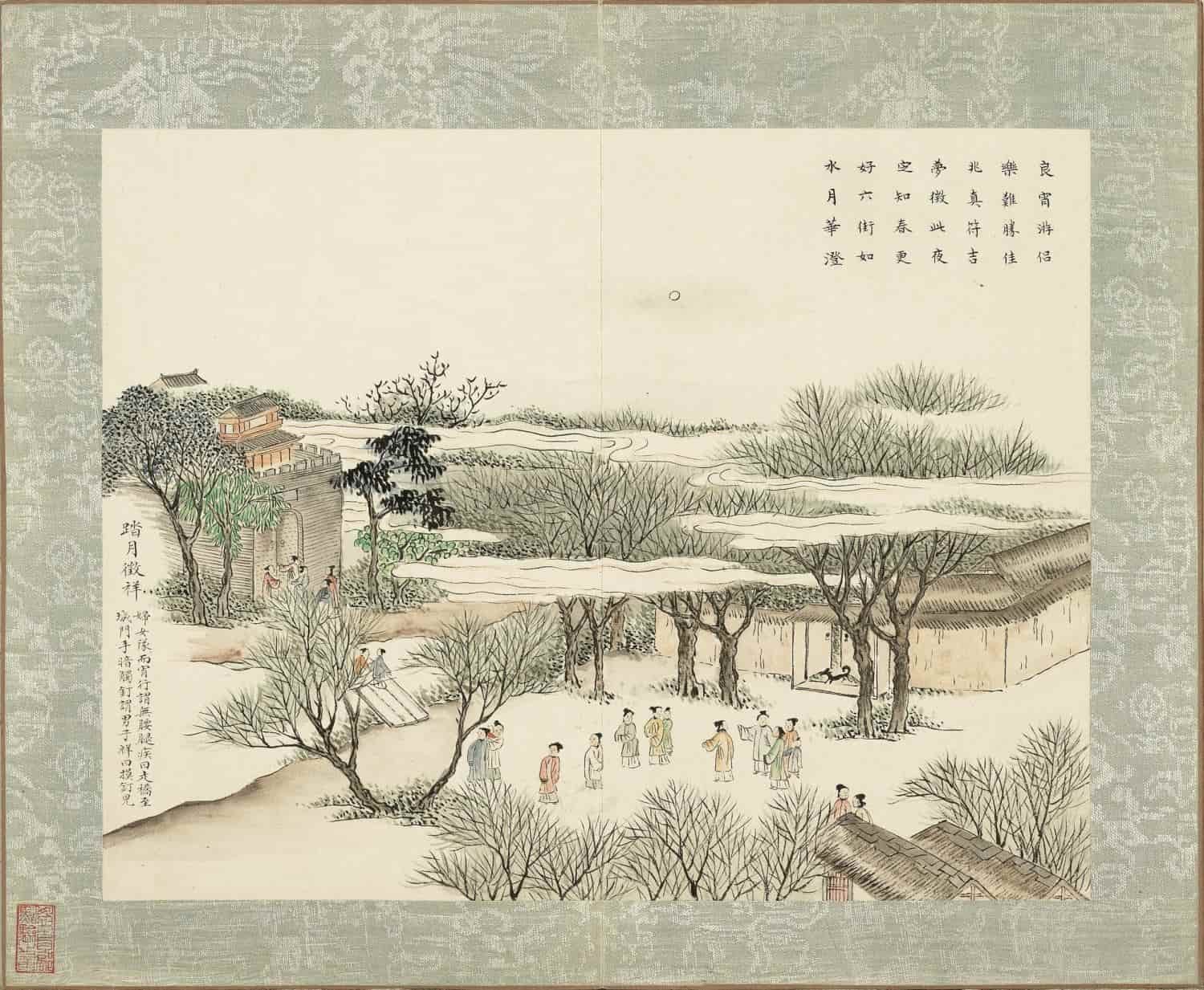
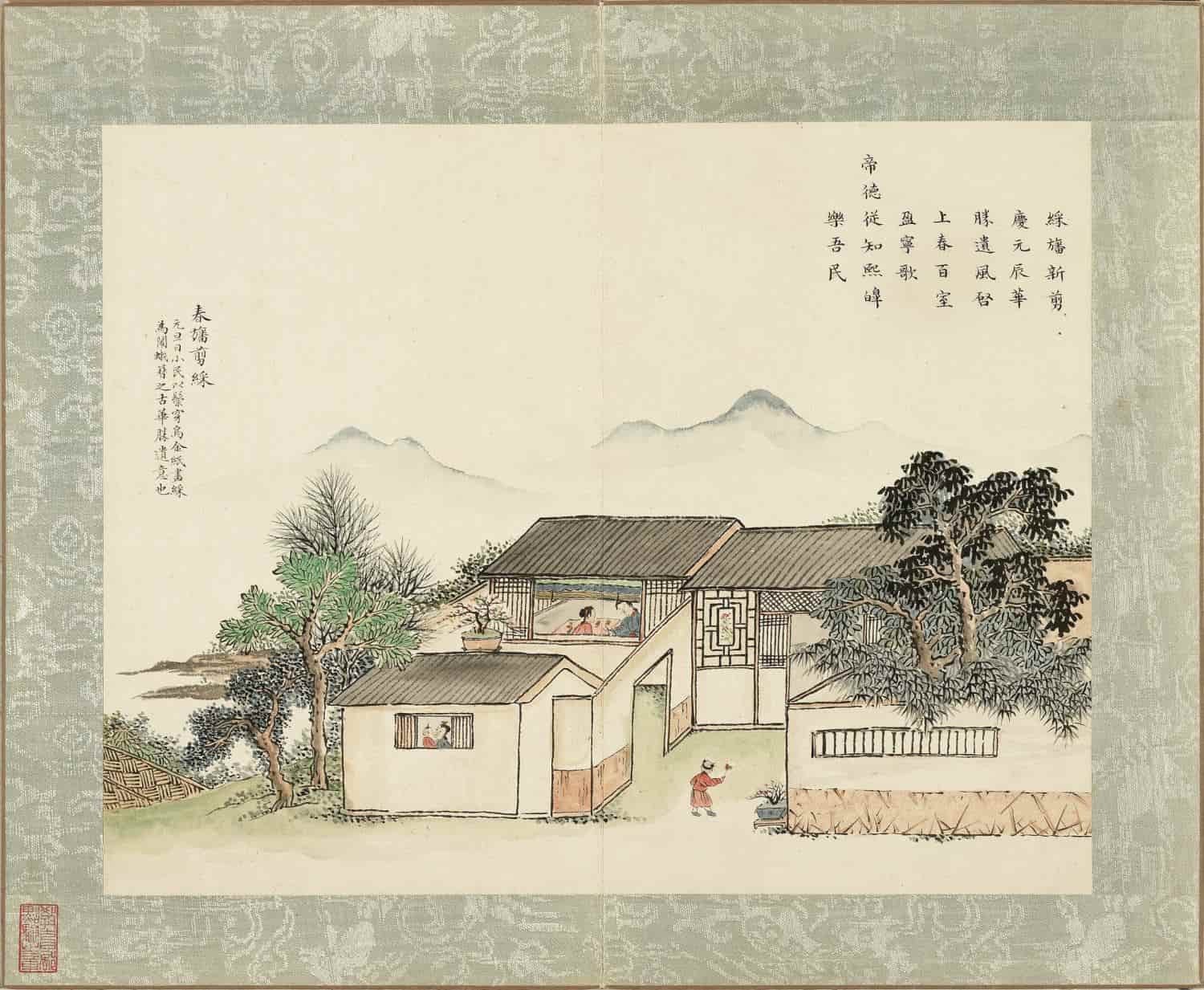
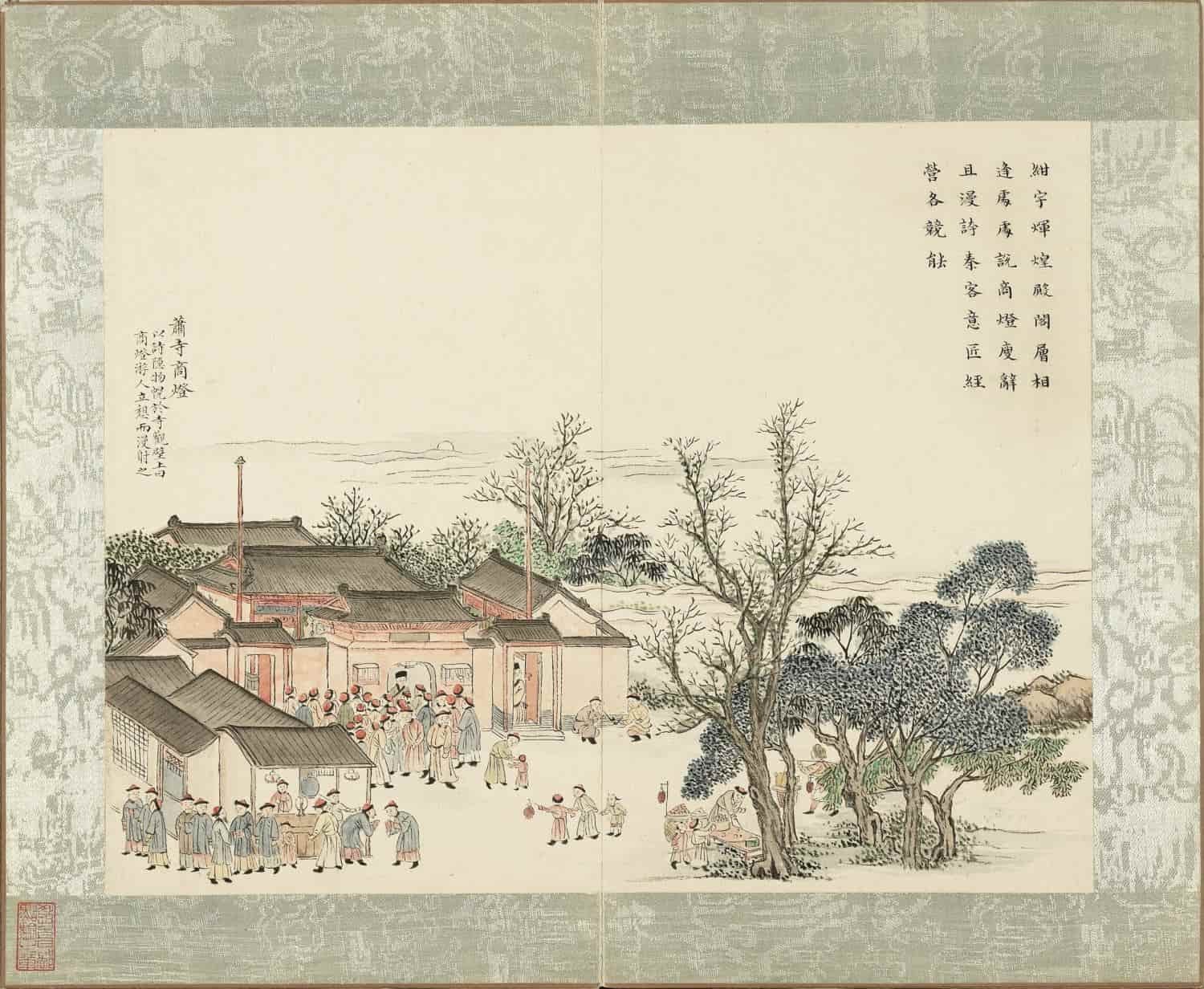
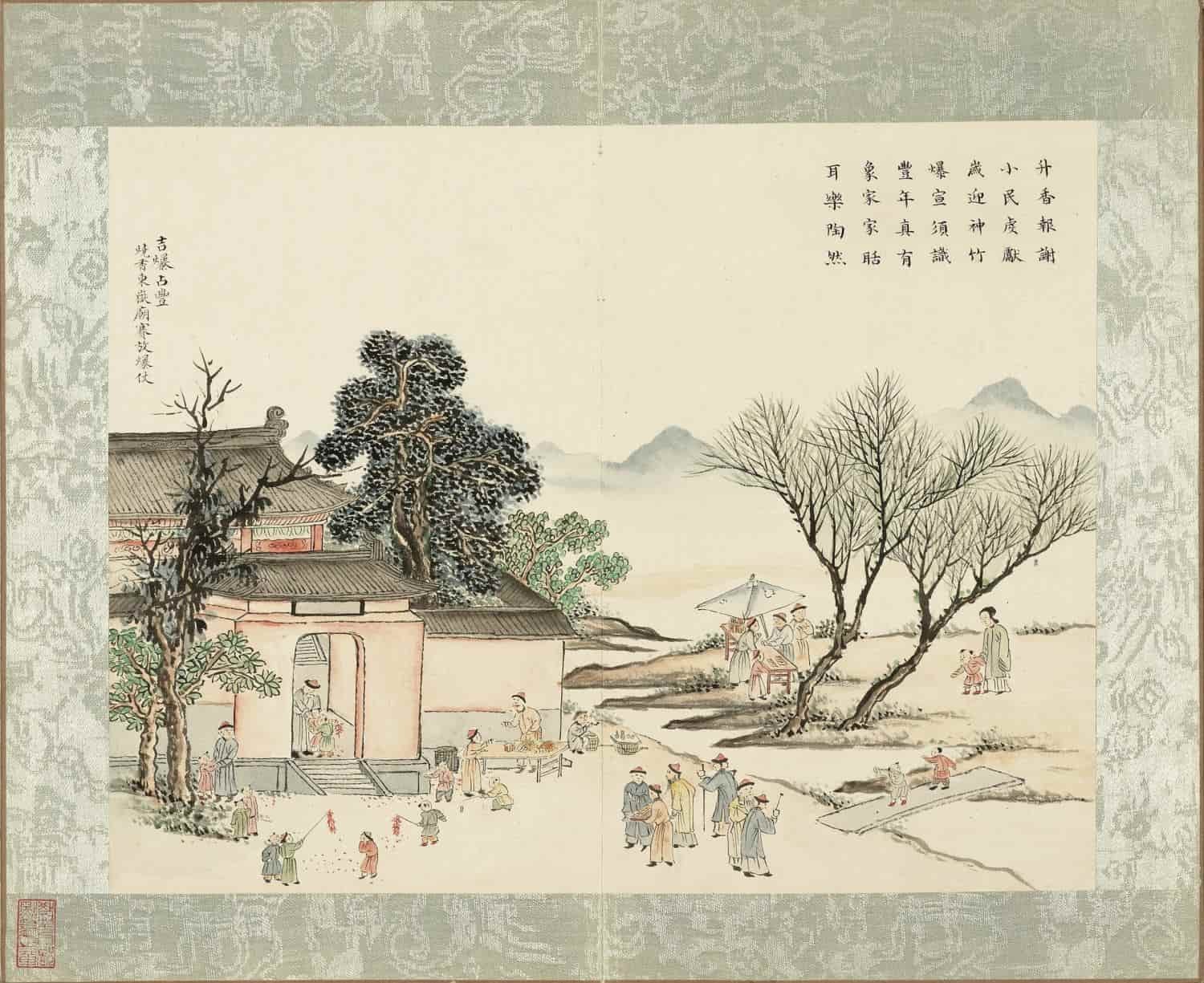
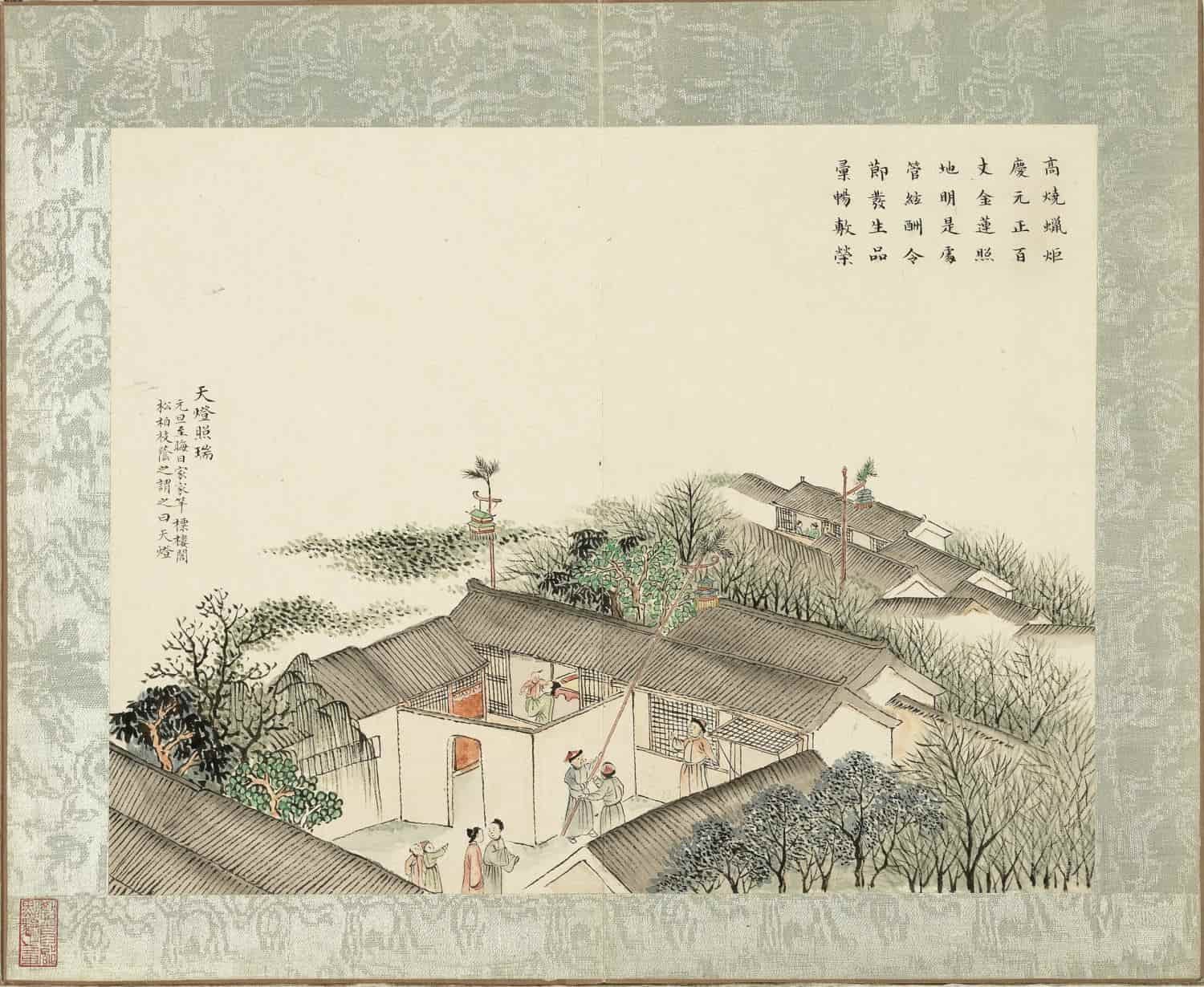
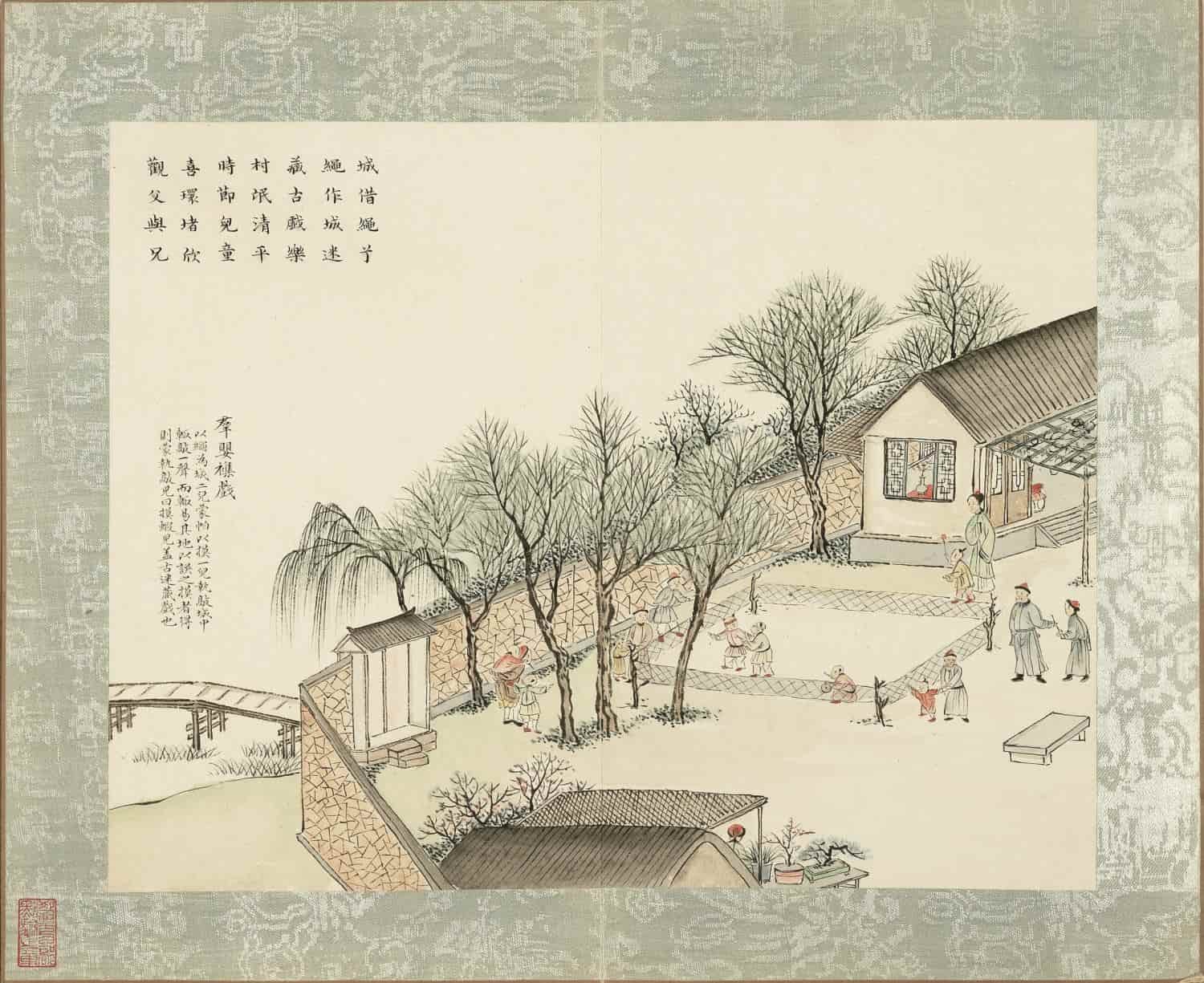
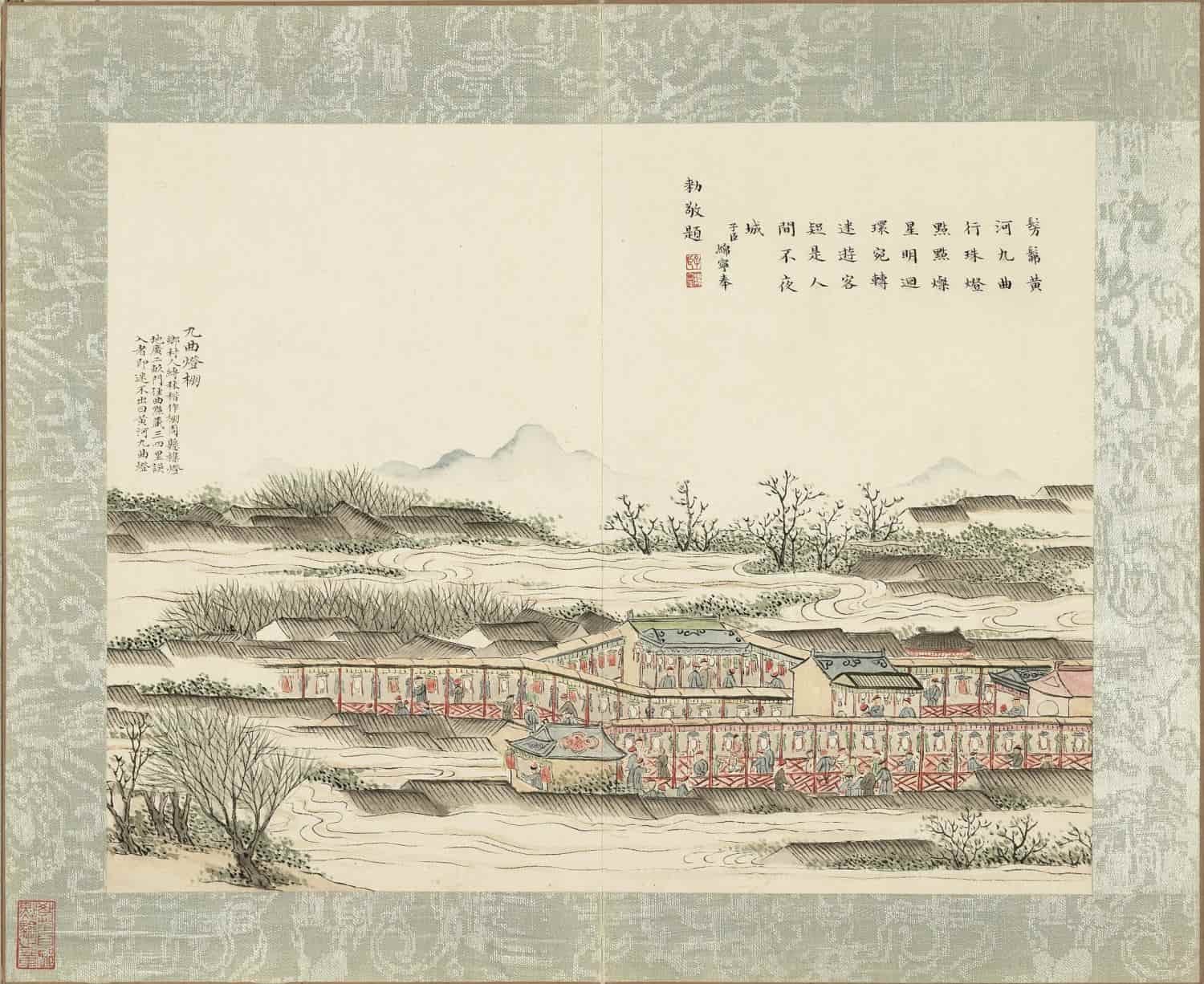
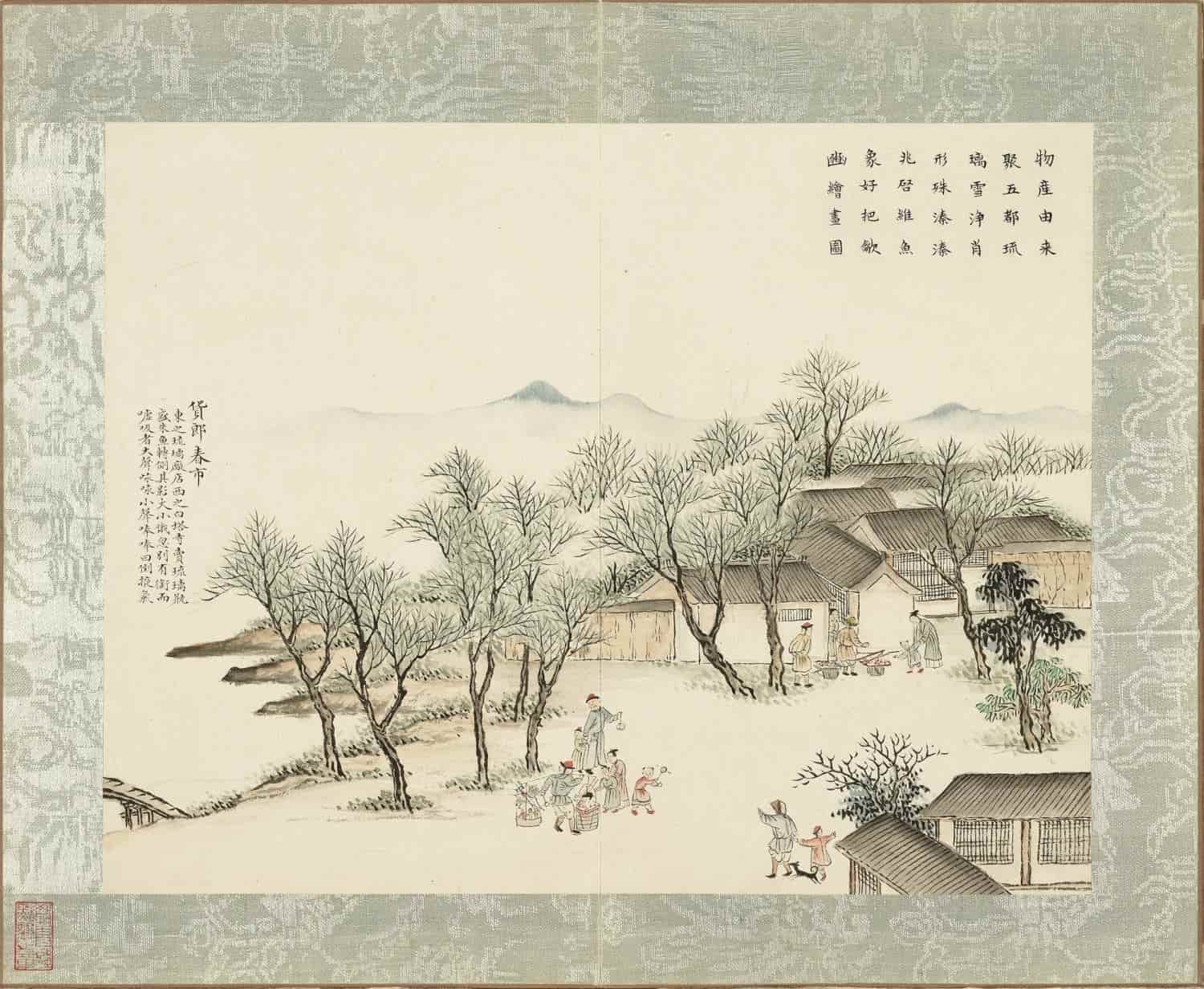
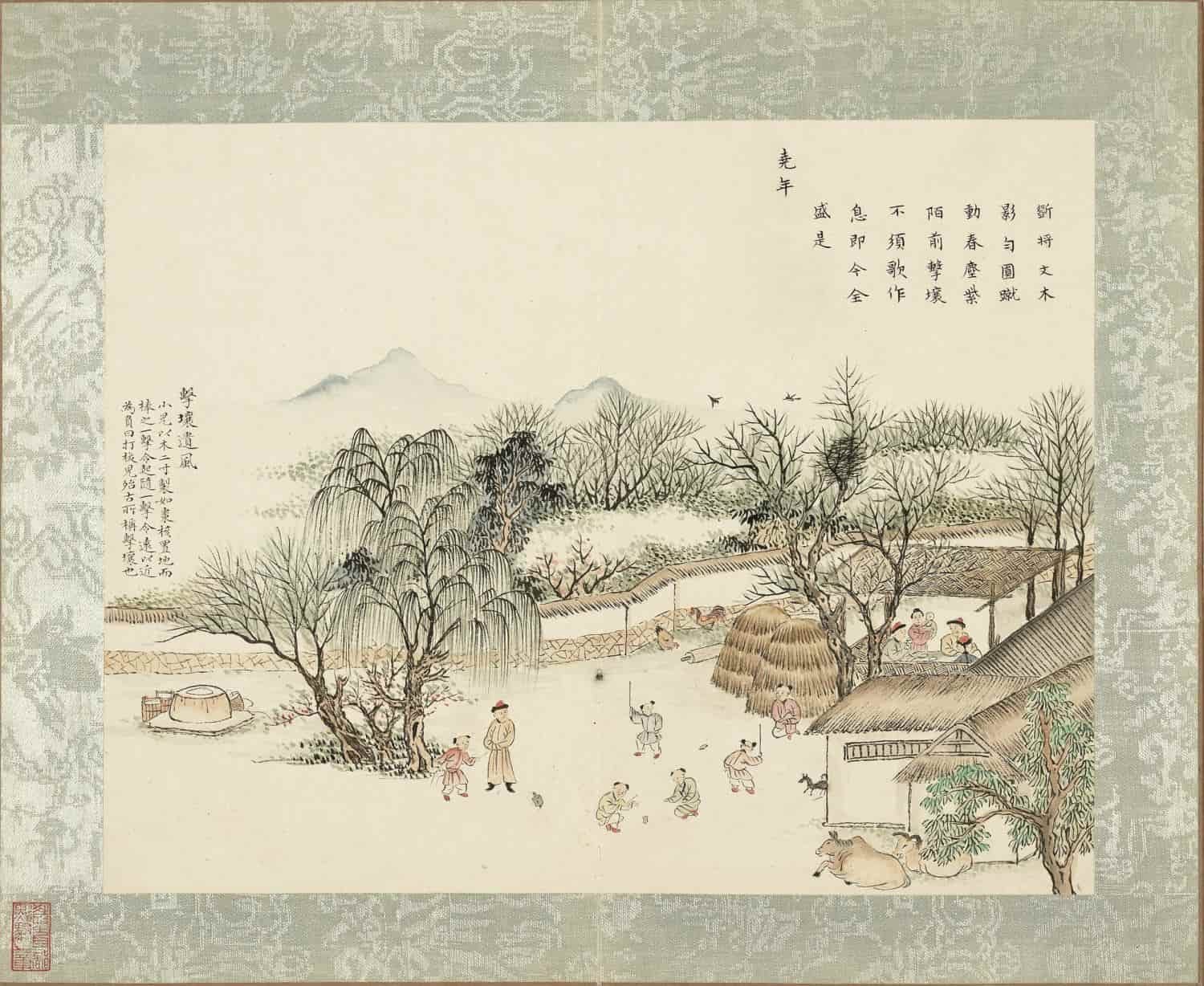
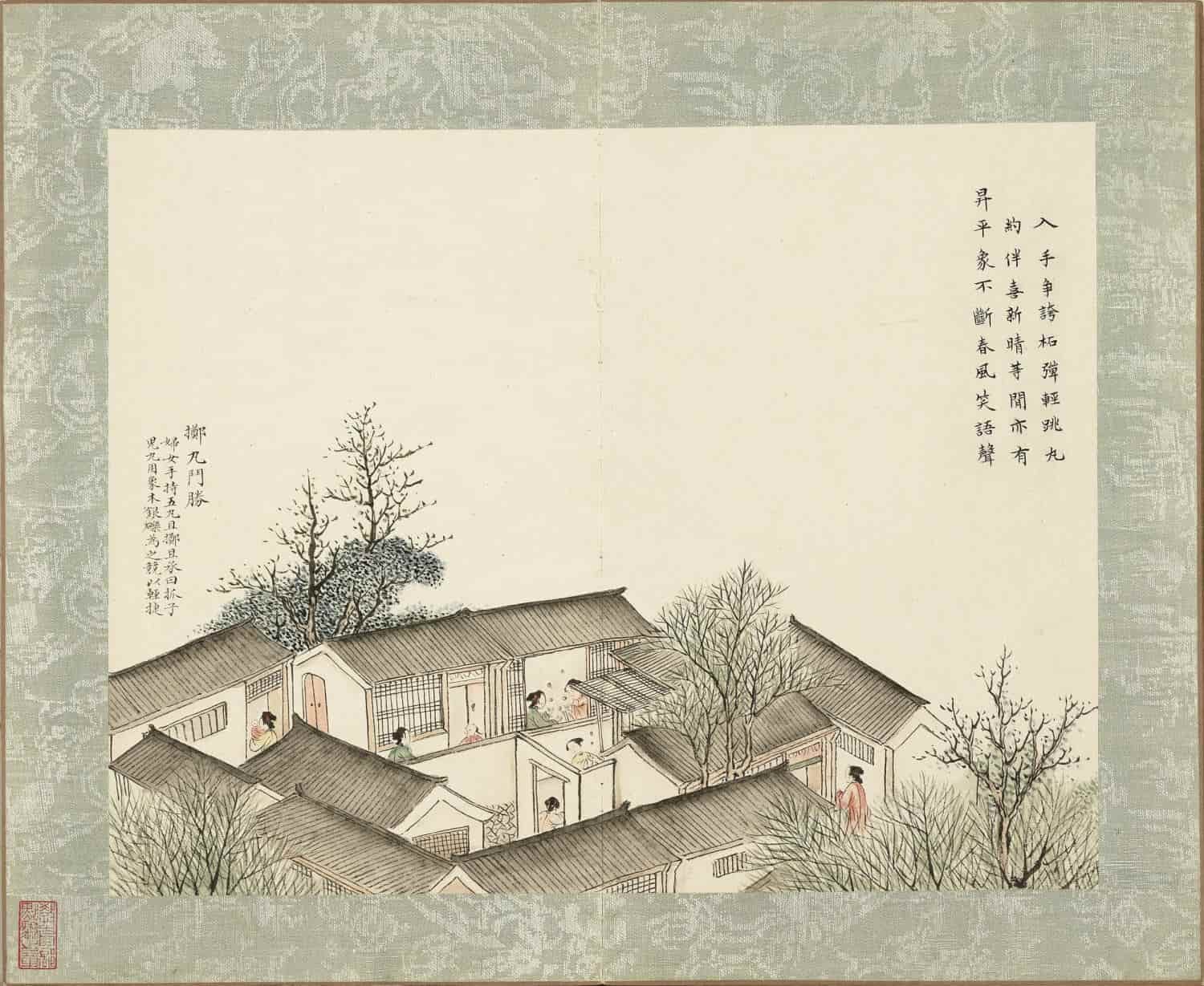
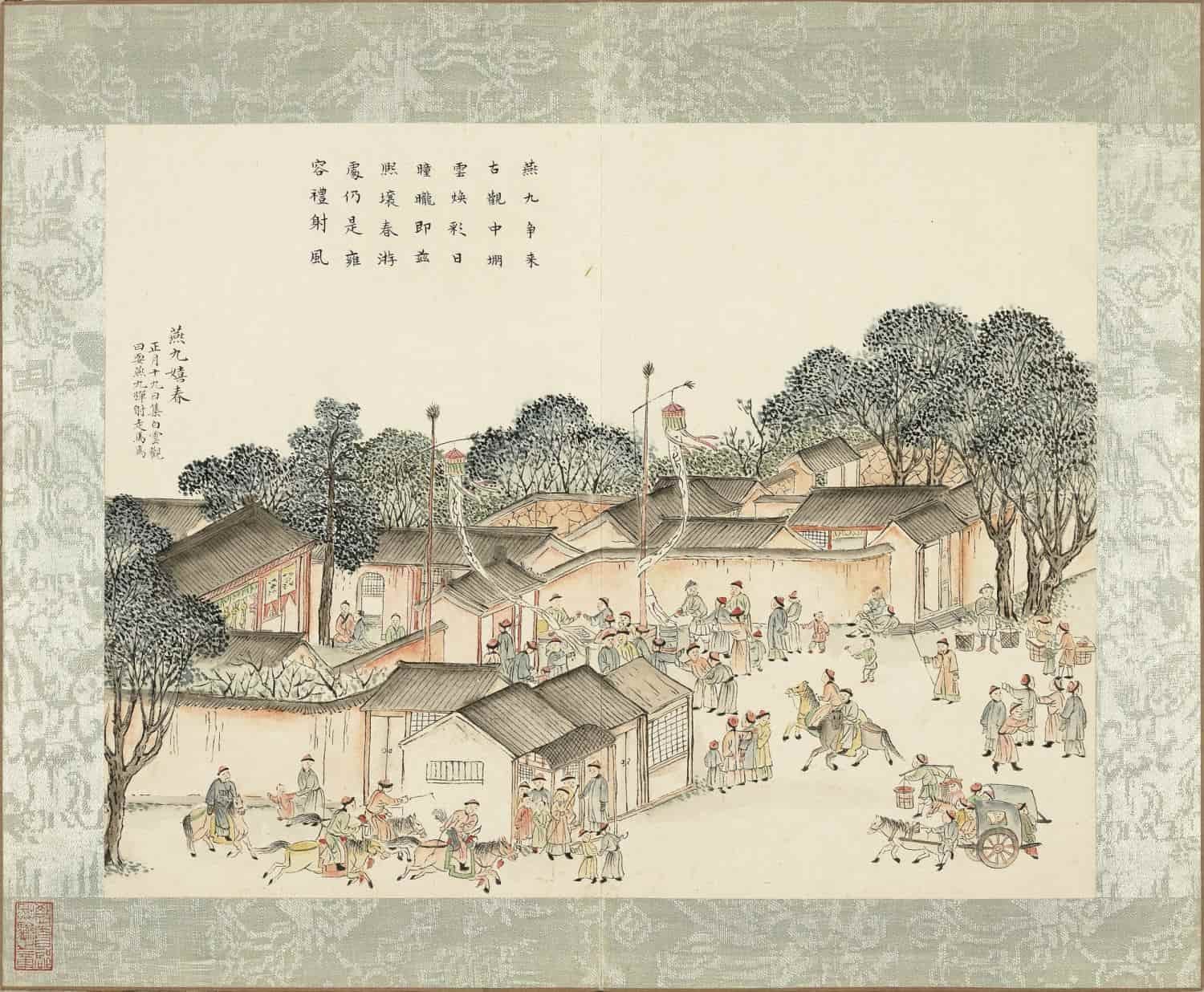
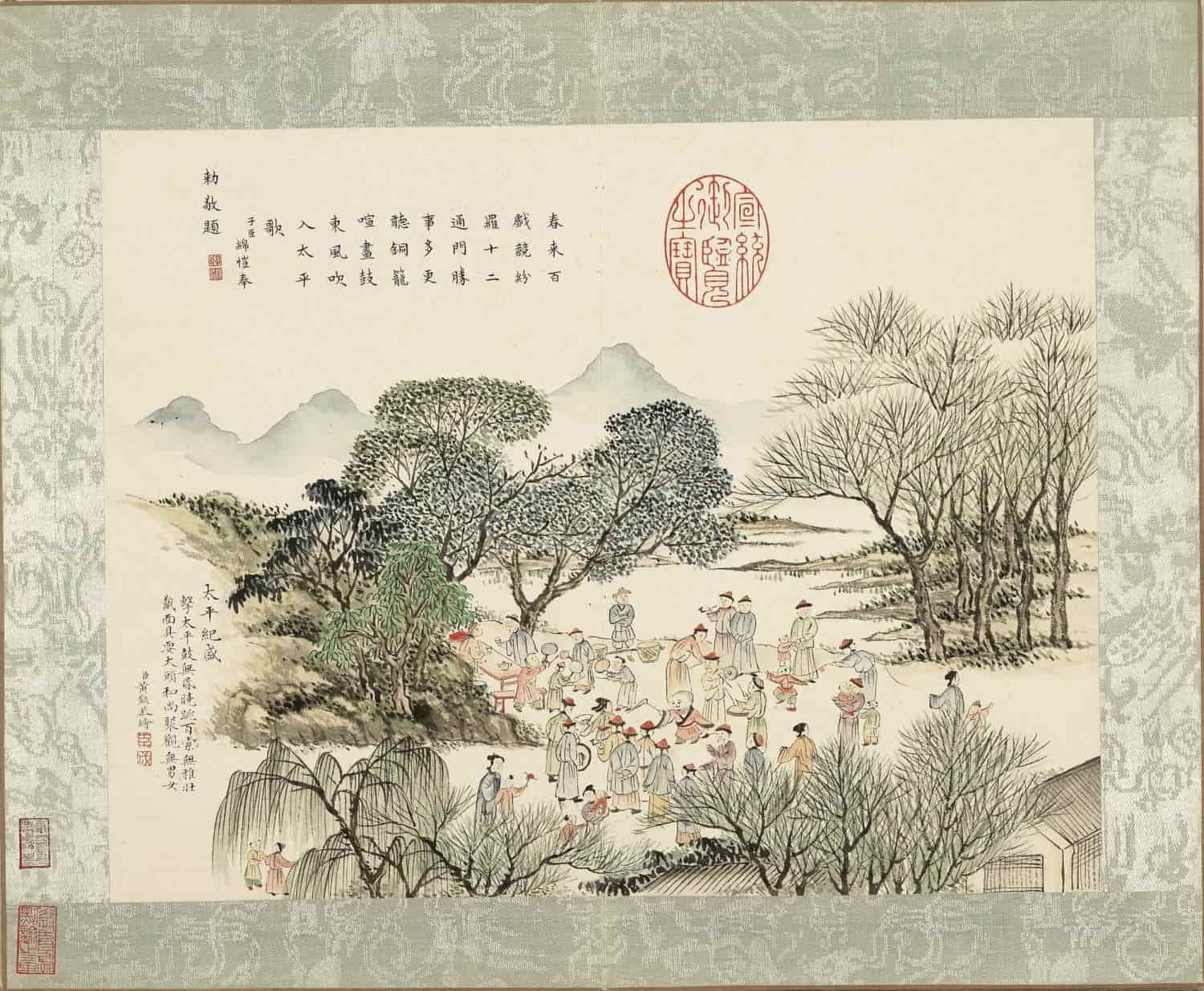
评价
目前还没有评价